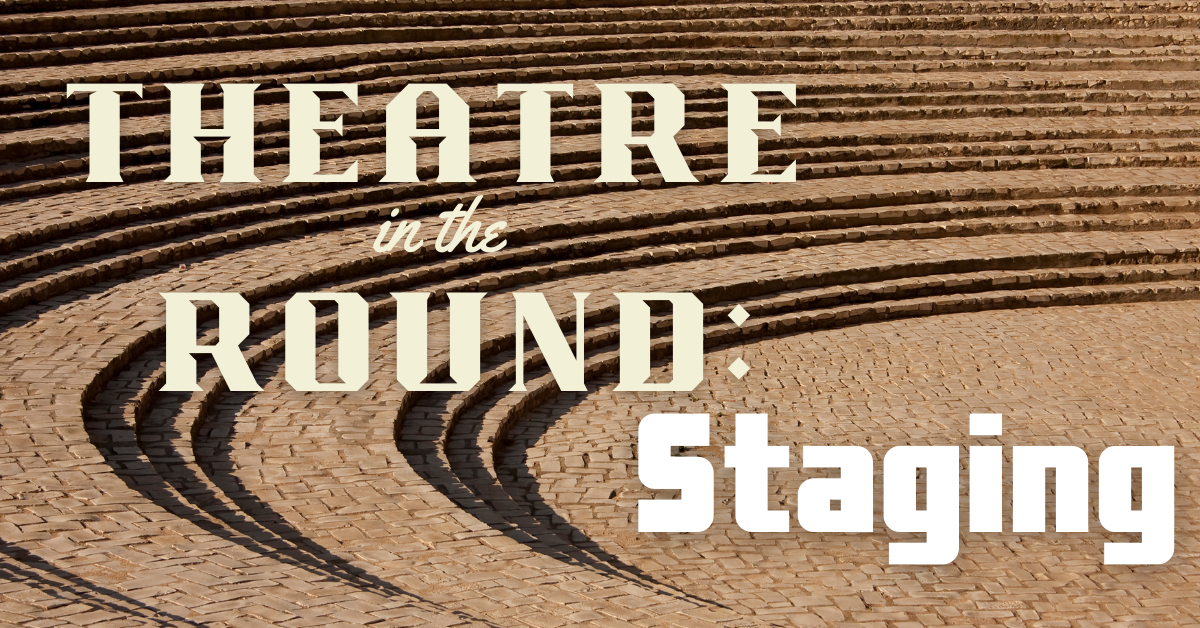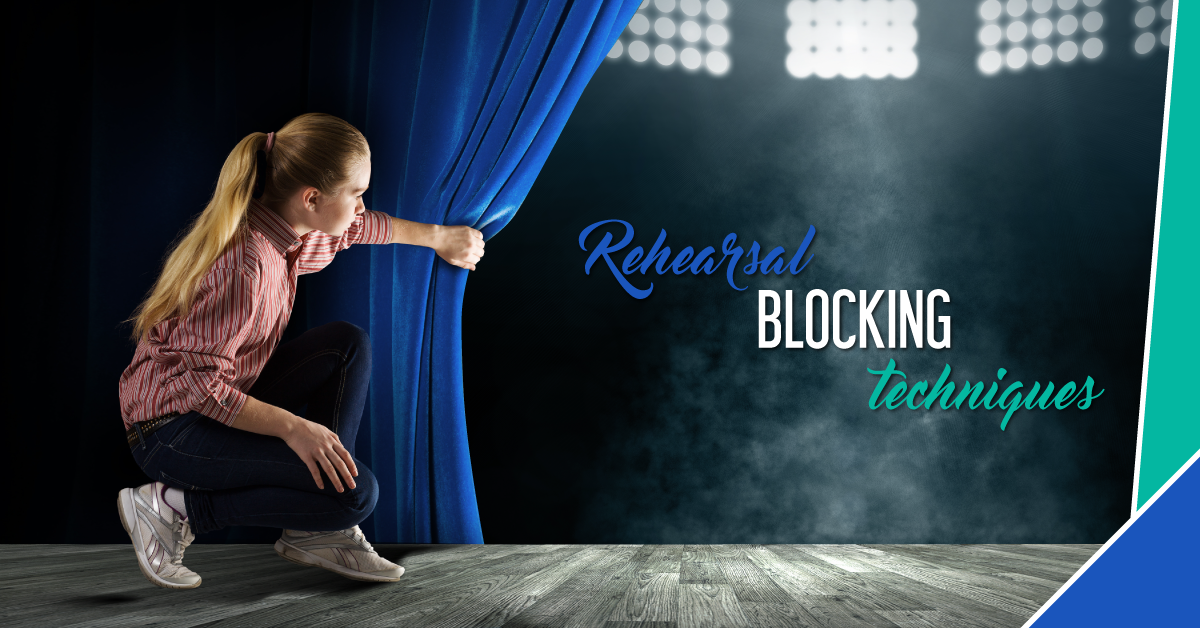Theatre in the Round – Staging
The show I’ve been doing this summer is staged in the round. Well, the audience is arranged in a more square-like pattern, but “in the round” will suffice for our purposes.
There aren’t many opportunities to perform in the round. I’m at one of only two professional theatres in Canada that works this way.
“In the round” has many unique benefits as well as challenges. Today I’m going to talk about staging, and on Sunday I’ll discuss acting.
The audience is highly engaged.
The arrangement of the seats makes the audience engage intensely with the action of the play. When the audience looks beyond the performers, they see other audience members. And they surely draw the conclusion that if they can see other audience members, that must mean that other audience members can see them. We all become performers, we’re all “on stage.”
The stage in our theatre (and I think in most in-the-round spaces) is at the same level as the audience. The audience has easy access to the stage, and they take full advantage of that fact. Ushers are constantly having to ask people not to walk on the stage, not to touch the props. It’s almost irresistible to them. When does the average theatregoer have a chance to have a tactile experience with the set and props?
The set has to work from all angles.
The set designer has to work in three dimensions, and envision a playing space that both suits the play and works for the audience from every angle. Flats are out. Walls have to be knee-height suggestions. Doors are really tricky to design well.
You need to learn a new blocking nomenclature.
There is no upstage/downstage/left/right in the round. For the play I’m doing, a fairly kitchen sink script, we actually stuck to “old school” terms. We arbitrarily picked a spot and called it downstage and it worked fine.
But another play I did in the same theatre was freer in its setting. It took place on a golf course over eighteen holes (scenes). Every scene had a different location for the tee-off, and faced a hole in a different direction. All six of us (four actors, plus the stage manager and the director) invented our own system for tracking this. Mine involved a watch face. Sounds like a nightmare, but we made it work somehow. By the end of rehearsal we could all translate each other’s systems.
Over the course of rehearsals, the director will position himself in a variety of spots around the rehearsal hall to ensure things are working OK.
The blocking has to work from all angles.
See the sofa? See the lounger? See the audience seats behind them? You can’t have actors sitting for long because their backs will be to the audience.
This one can be really tough. The audience wants to see things, right? But when you get more than two or three actors on stage it’s really tough to space them out so they’re not blocking anybody for anyone in the audience.
The actors have to move, move, move!
That big four-page introspective monologue at the end of act one? It’s not going to be a park-and-bark extravaganza. That puppy has got to move. No matter where you’re standing on stage, your back is always to someone. The audience will only tolerate the back of your head for so long. One director I know uses 20 seconds as a rule of thumb. You’re never in the same spot for longer than 20 seconds.
Same with a two-hander scene. Both of you have to move so that everyone can see everything.
Something as simple as an important hand gesture, or the revelation of a prop, has to be done as you spin around so everyone in the audience can see what you’re doing/holding.
What about acting?
Staging is one thing, but acting is a whole other thing. Tomorrow I’ll talk a bit about acting in the round. It can get real crazy, I tells ya’!



